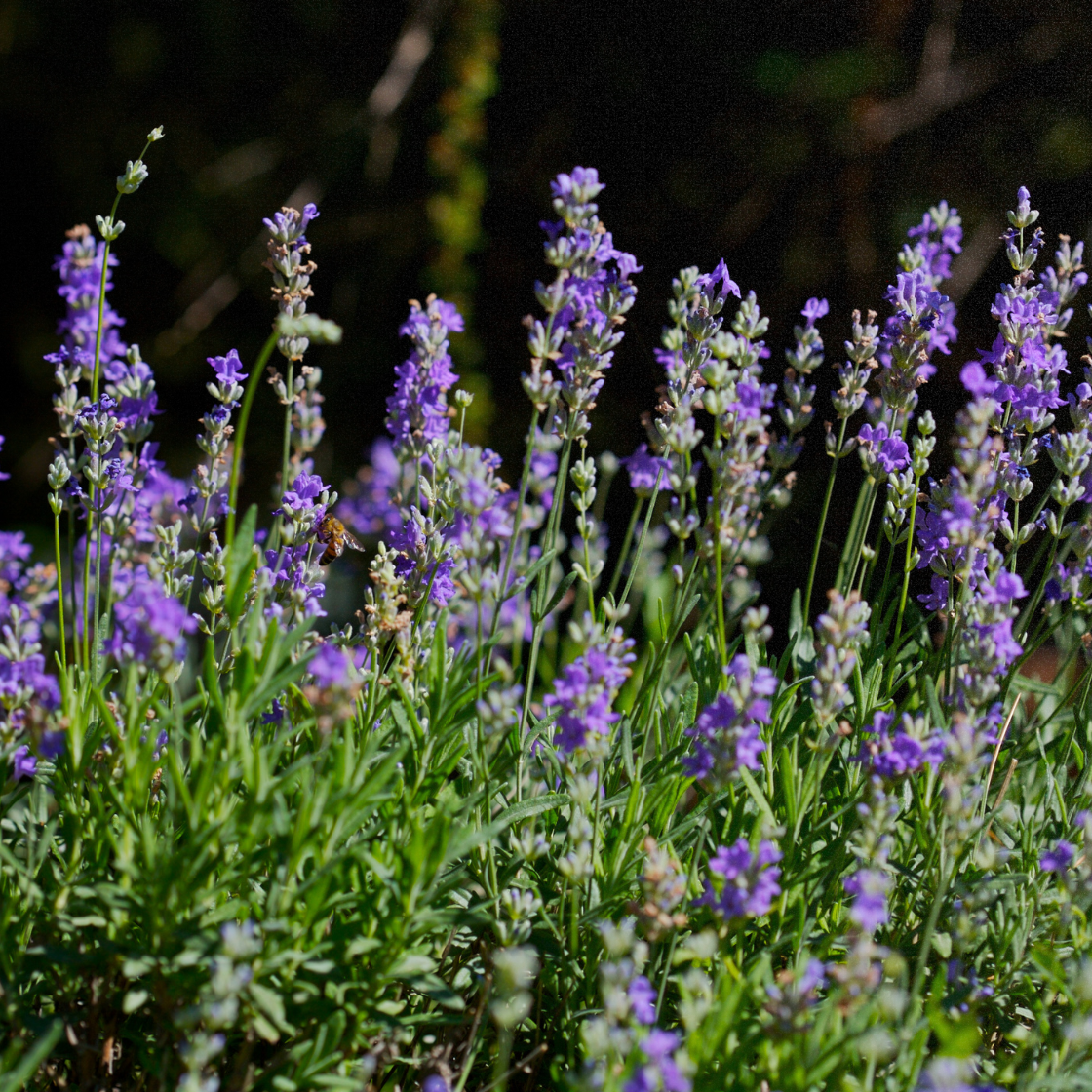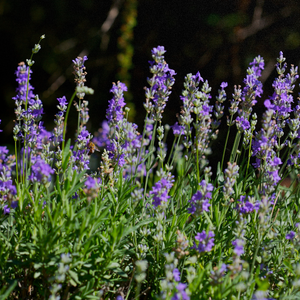- Hardiness Zone: 3-5 Annual
- Hardiness Zone: 5-10 Woody Perennial
Seed Depth: ¼ inch (surface sow, lightly press into soil)
Seed Spacing: 12–18 inches
Row Spacing: 18–24 inches
Sunlight: Full sun
Days to Sprout: 14–21 days (may require cold stratification for best germination)
Days to Maturity: 90–200 days (best blooms in second year)
Growth Habit: Compact perennial herb with upright flower spikes
Sunlight: Requires full sun for best growth and fragrance.
Soil Type: Prefers sandy, well-drained soil with low to moderate fertility; avoid heavy or waterlogged soils.
When to Plant: Start seeds indoors 8–10 weeks before last frost. Transplant outdoors after danger of frost has passed and soil has warmed.
Direct Sowing: Can be sown outdoors after the last frost, but germination is slower and less reliable without stratification.
Indoor Sowing: Surface sow seeds and lightly press into soil. Keep at 65–70°F with bright light. Germination may take up to 3 weeks. Cold stratification (placing seeds in moist soil in the refrigerator for 2–4 weeks) improves germination.
Succession Planting: Not needed; lavender is a perennial that grows back year after year in suitable zones.
Watering: Water young plants regularly until established. Once mature, lavender is drought-tolerant; water deeply but infrequently. Avoid soggy soil.
Weeding: Keep the area around plants weed-free to reduce competition for nutrients and airflow.
Fertilizing: Requires little feeding. If needed, apply a light dose of balanced, slow-release fertilizer in spring. Too much fertilizer reduces fragrance.
Mulching: Use gravel or light mulch around plants to retain moisture and keep foliage dry. Avoid heavy organic mulches.
Pruning: Lightly prune after flowering to encourage bushy growth and prevent plants from becoming woody.
Pest Management: Generally pest-resistant, but watch for root rot in poorly drained soils.
When to Harvest: Cut flower spikes just as the buds begin to open for peak fragrance and color. Harvest in the morning after dew has dried.
How to Harvest: Use clean, sharp scissors or pruners to cut stems above a set of leaves, leaving plenty of foliage for regrowth.
Storing for Use: Bundle stems and hang upside down in a cool, dark, and well-ventilated area until fully dry. Store dried flowers in airtight containers away from direct sunlight.
Seed Collection: Allow some flowers to remain and mature into seed heads. Collect seeds once they are dry and darkened.
Storing Seeds: Keep seeds in a sealed container in a cool, dry, and dark place; viable for 3–4 years.
Allow to Flower: Leave some flower spikes on the plant to mature fully.
Seed Maturity: Collect seeds when the flower heads are completely dry and turning brown.
Harvesting Seeds: Gently rub dried flower heads over a tray to release seeds; remove any chaff or debris.
Storage: Keep seeds in an airtight container in a cool, dark, and dry place; viable for 3–4 years.
Why You’ll Love It
Fragrant Blooms: Produces highly aromatic flowers prized for their calming scent.
Perennial Favorite: Returns year after year in zones 5–9 with minimal care.
Pollinator Magnet: Attracts bees, butterflies, and other beneficial insects.
Versatile Use: Excellent for fresh bouquets, dried arrangements, and homemade crafts.
Plant Characteristics
Height: 18–24 inches
Growth Habit: Compact, bushy mounds with upright flower spikes
Flower Type: Violet-blue spikes with strong fragrance
Days to Maturity: 90–200 days from seed (best blooms in second year)
Hardiness: Perennial in zones 5–9
Flavor and Culinary Uses
Flavor: Floral, slightly sweet, with citrus and rosemary undertones
Culinary Uses: Adds a delicate flavor to teas, baked goods, jams, and infused syrups
Companion Planting Tips
Good Companions: Rosemary, sage, thyme, and echinacea
Avoid Planting Near: Heavy feeders that require rich soil, as lavender prefers lean soil
Bonus Benefit: Repels deer, rabbits, and common garden pests
Common Issues and Solutions
Root Rot: Plant in well-drained soil and avoid overwatering
Winter Damage: In colder zones, mulch around plants for added protection
Leggy Growth: Prune lightly after flowering to maintain a bushy habit
Seeds Per Packet
| 500mg | Approximately 90 |
| 1g | Approximately 180 |
Why You’ll Love It
Fragrant Blooms: Produces highly aromatic flowers prized for their calming scent.
Perennial Favorite: Returns year after year in zones 5–9 with minimal care.
Pollinator Magnet: Attracts bees, butterflies, and other beneficial insects.
Versatile Use: Excellent for fresh bouquets, dried arrangements, and homemade crafts.
Plant Characteristics
Height: 18–24 inches
Growth Habit: Compact, bushy mounds with upright flower spikes
Flower Type: Violet-blue spikes with strong fragrance
Days to Maturity: 90–200 days from seed (best blooms in second year)
Hardiness: Perennial in zones 5–9
Flavor and Culinary Uses
Flavor: Floral, slightly sweet, with citrus and rosemary undertones
Culinary Uses: Adds a delicate flavor to teas, baked goods, jams, and infused syrups
Companion Planting Tips
Good Companions: Rosemary, sage, thyme, and echinacea
Avoid Planting Near: Heavy feeders that require rich soil, as lavender prefers lean soil
Bonus Benefit: Repels deer, rabbits, and common garden pests
Common Issues and Solutions
Root Rot: Plant in well-drained soil and avoid overwatering
Winter Damage: In colder zones, mulch around plants for added protection
Leggy Growth: Prune lightly after flowering to maintain a bushy habit
Seeds Per Packet
| 500mg | Approximately 90 |
| 1g | Approximately 180 |




Share and get 15% off!
Simply share this product on one of the following social networks and you will unlock 15% off!